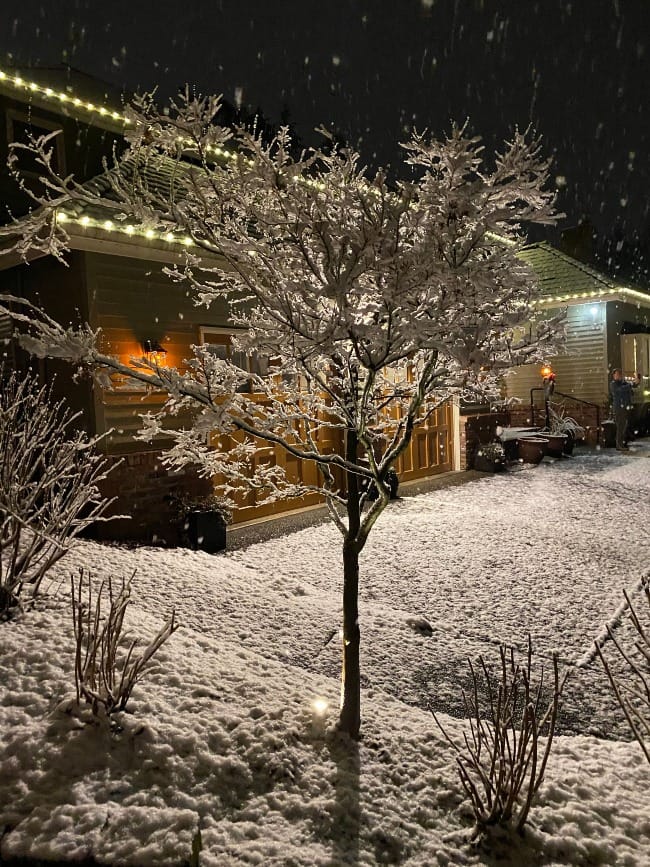It is often noted that Jesus frequently and intentionally withdrew from human community to be alone and to pray. For instance, at the beginning of his public ministry, as word about him begins to spread, Mark tells us, "Very early in the morning, while it was still dark, Jesus got up, left the house and went off to a solitary place, where he prayed (1:35)."
Most commentators and preachers reflect on these episodes by emphasizing the centrality of solitude and prayer to the life and ministry of Jesus. What they rarely emphasize is the importance of place in these moments. For example, all four gospels tells us that Jesus often sought out mountains for his retreats.
Mark and Matthew both tell us that after Jesus feeds a crowd of several thousand people, he dismissed them and "went up on a mountainside by himself to pray (Mk. 6:46; Mt. 14:23)."
Luke tells us that "Jesus often withdrew to remote places and prayed (5:16), which includes an occasion when "Jesus went to a mountainside to pray, and spent the night praying to God (Lk. 6:12)."
Jesus did not reserve this practice solely for himself - Mark, Matthew, and Luke include a story about Jesus taking Peter, John, and James up on a mountain to pray (Mark 9:2; Mt 17:1; Lk 9:28).
Even John's gospel, which focuses heavily on Jesus' interaction with religious leaders in Jerusalem, includes an episode in which Jesus feels the need to get away from people. "Jesus, knowing that they intended to come and make him king by force, withdrew again to a mountain by himself (6:15)."
Did mountains simply provide Jesus with a convenient place to get away, or was there more going on?

The Place(s) of Prayer
It is important to remember that, in the Bible, encountering God in and through the created world is a primary experience. From the forest garden of Eden to the jagged peaks of Sinai to the immersive waters of the Jordan River, we see that the Earth is a temple, full of places in which the divine presence can be encountered. The poet of Psalm 139 captures this well:
Where can I go from your spirit?
Or where can I flee from your presence?
If I ascend to heaven, you are there;
if I make my bed in the depths, you are there.
If I take the wings of the morning
and settle at the farthest limits of the sea,
even there your hand shall lead me,
and your right hand hold me fast.
This is not to exclude constructed places of prayer and worship, which are, though forged by human skill and craft, part of creation. The Bible upholds constructed sites such as the Tabernacle and Temple as special locus points of divine-human interaction. It must be remembered, however, that the designs of these sites were meant to reflect the larger created order and help worshipers recognize the sacredness of all creation.
Problems emerge when those in charge of constructed worship sites flip the script and position places of worship as exclusive sites of divine encounter and revelation. This enables religious leaders to maintain significant power and control, essentially regulating divine access. In addition to overplaying their role as mediators of God's presence, this also domesticates people's understanding of God, forgetting that "the God who made the world and everything in it is the Lord of heaven and earth and does not live in temples built by human hands" (Acts 17:24).
Back to Jesus and mountains. In Scripture, mountains are both symbolic and literal places where heaven and earth meet. As such, they encourage us to remember that God's intention for creation is the unification of all things. A Christian understanding of Jesus is that his incarnation accomplishes this coming together of heaven and earth, so it makes sense that he frequently sought out locations that connected his bodily experience of unity with that of the wider creation. It is no mistake that a moment of transfiguration, in which his divine/human glory is revealed to James, Peter, and John, happens on a mountain.
Finding Thin Places

We may not be able to withdraw from our regular life and seek God on rugged mountain peaks, but if we see them as examples of how we might connect to God in and through natural places, we can find places of prayer in which heaven and earth feel a little bit closer. In the Celtic imagination, these are called "thin places."
How do you know you are in a thin place? While I hesitate to put too much structure around what is essentially a mystery, let me suggest that you are in a such a place when:
- You recognize that you are a small (but important) part of something much larger than yourself, and you feel a sense of awe and wonder.
- Your mind and heart are simultaneously drawn to the divine and the mundane - the heavenly and the earthly.
- You are moved to gratitude, praise, and/or prayer.
- You leave the place with a renewed sense of your self, the world, God, and the sacredness of all things.
You may have a special place that you return to - one of mine is a view of Lake Sammamish, framed by the foothills of Cascade mountains, with the white-capped peak of Tahoma (Mt. Rainier) appearing on clear days between two peaks. The view comes at one particular spot on a walk I take near my home, and I pause every time for a moment of thanks and praise. You may also be surprised to find thin places in unexpected locations - I was moved one snowy evening by a young tree, covered in snow, backlit by my neighbor's Christmas lights (pictured above). Nothing incredibly profound happened - it simply caught my attention, and as I lingered over it, I felt a deep sense of gratitude.
You can seek out thin places - just keep your eyes, ears, and heart open. You can also let God surprise you, for if the whole world is sacred, the distance between heaven and earth can disappear in a moment.
With you on the Way,
James
As always, I love to hear from readers. Email me directly at james.amadon@circlewood.online. You can also comment below.
Like what you are reading? Consider joining our supporter community, The Circlewood Stand. Click the image below to learn more.
